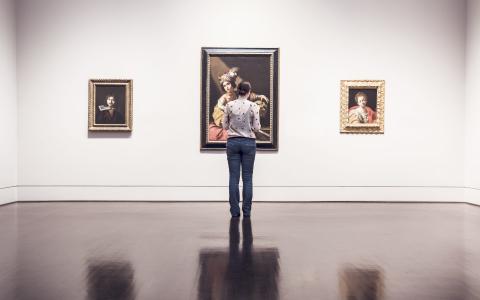
In an event that seamlessly entwined history, art, and opulence, Christie's concluded the first segment of the monumental Rothschild auction series, amassing a staggering US$43.237 million in sales. Notably, this auction, coined "Rothschild Masterpieces," witnessed a 245% hammer above its minimum estimate and sold 95% of the lots.
This spectacle, held at Christie's New York headquarters, unfolded a world of artistry, revealing to the patrons a rich collection of furniture, enamels, precious stones, silverware, and paintings, carefully and thoughtfully accumulated by the Rothschild generations in 19th-century France. What might a wealth advisor or an RIA deduce from such an event?
The Rothschilds, synonymous with wealth, offer not just a tale of financial prosperity but demonstrate a long-term perspective on value preservation and legacy creation through art.
A sale leader was Gerrit Dou’s 17th-century painting, which achieved an astounding US$7.06 million, eclipsing its high estimate of US$5 million. Another noteworthy sale was The Triumph of David, a suite of embossed leather panels from the mid-17th century, which accomplished a final bid of US$4.4 million, vastly exceeding its original estimate.
Examining the Rothschild family’s patronage to art, specifically through prominent members like Baron James Mayer de Rothschild, his wife, Betty, and their son, Baron Alphonse, it's apparent that their acquisitions went beyond mere possession. Their collections, adorning their Parisian residences and the Château de Ferrières, equaled those of the most illustrious European courts, synthesizing a tangible manifestation of their economic and cultural influences.
For the discerning wealth advisor and RIA, the Rothschild’s tradition of collecting, safeguarding, and ultimately, transacting art and rare artifacts is a journey through maintaining and enhancing wealth across generations. This family, celebrated for owning perhaps the most substantial private fortune globally in the 19th century, remained committed custodians of their collective works, while also expanding their holdings comprehensively.
A consideration for wealth managers today, navigating through the aspirations of affluent families, is the embodiment of the "Rothschild taste" or "le goût Rothschild." This perspective doesn’t only emphasize the opulent but also honors unique, scholarly, and style-specific pieces, as echoed by Dominic Simpson, a senior international consultant at Christie’s
Art and artifacts from the Rothschilds mirror more than aesthetic appeal; they reflect strategic wealth allocation, socio-economic dominance, and a rich legacy, transcending mere financial investment. Their curated works have shaped an interior and lifestyle design ethos that continues to reverberate through contemporary times, as evidenced in the fervent bidding and international interest during the auction.
This series, which closed with over 600 lots spanning Italian Renaissance maiolica, sculptures, European furniture, and Renaissance jewelry, serves as a rich tapestry of material culture and astute investment. An exemplary highlight was a first-century AD Roman Sardonyx cameo, realizing US$2.1 million, magnificently surpassing its initial low estimate of US$200,000.
Exemplifying the significant impact of "le goût Rothschild," wealth advisors and RIAs might perceive the affinity towards historical, cultural, and, most importantly, valuable assets as a focal point in wealth conservation and enhancement strategies for affluent families today. The Rothschild’s influence, mirrored even in contemporary figures such as Yves Saint Laurent, exemplifies how tasteful, strategic acquisition of artifacts becomes a symbiotic relationship between maintaining wealth and cultural stewardship.
Paul Gallois, head of European furniture at Christie’s, notes that the Rothschild's method of showcasing their collection was simultaneously opulent, inviting, and yet subtly comfortable. A lesson here for wealth management is that the Rothschild’s approach is less about flamboyance and more about identifying and preserving high-caliber art, enmeshed within its historical and cultural matrix.
Through numerous auctions over more than a century, including the pivotal sale of 50 masterpieces in London in 2019, which garnered GB£23.8 million (US$29.3 million), the Rothschild family demonstrates that wealth isn’t merely transactional or static but is a dynamic entity, interweaved with societal, cultural, and historical narratives.
For contemporary wealth advisors and RIAs, the Rothschild Masterpieces auction presents a window into the prismatic perspectives of wealth. Beyond the figures, the strategic assembly, preservation, and eventual, purposeful dispersion of artifacts demonstrate a long-term, holistic approach towards wealth, legacy, and socio-cultural influence, which remains pertinent for affluent clientele in today’s financial landscape.



